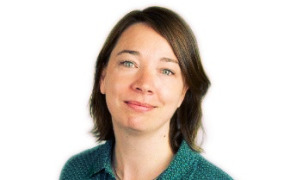Safe guarding and evolve spatial quality and identity in landscape development plans which anticipate on sea-level-rise and energy transition.
A quickscan of the Province of Groningen shows a list of several landscape development plans in which spatial quality and identity, cultural history, heritage and possibilities for leisure are taken into account.
Regarding tourism strategies about heritage and landscape, they are not only related to the reuse of heritage, but also to the use of the overall experience of cultural landscapes.
For example the Waddensea Unesco Heritage rerion: mudflats, dykes and more inland a unique landscape with villages on 'Wierden' - manmade hills - and the highest density of churches from the late Middle Ages.
The whole coastline of Unesco World Heritage site Waddensea has protentional for being further developed. The aim of the New Water Works Zoutkamp is to contribute to the futureproofing of the system of canals and rivers in the northern part of Groningen. The way this project aims to achieve this is by on the one hand restoring the old Hunsingo lock (built in 1859) and restoring the function of the old sea dyke. On the other hand by constructing a new pumphouse next to the old lock to increase the volume of water that can be pumped. To further increase the pumphouse’s efficiency, a new set of lock doors are being installed in the village of Schouwerzijl. The whole project is a combination of water management, keep-safe of cultural heritage, quality of life in the village of Zoutkamp and its surroundings, redevelopment of the lock and further development of the tourism marina.
Resources needed
The estimated budget for this project is € 31,6mln. Regional water authority Noorderzijlvest: construction the pumphouse (€16mln). Other parties: Province of Groningen, municipality Het Hogeland, the National Program Groningen, Erfgoeddeal (Heritage deal) and local business owners.
Evidence of success
The local community was involved in the project from the very first beginning. Their ideas helped to turn the project into what it is today. The benefit of having the local community involved lies in the support it generates for the project. It sustains and enhances commitment of the community to the changes in the landscape. With bottom-up ideas and support from residents spatial development is more likely linked to local spatial spatial identity. All this enhances the liveability.
Difficulties encountered
Technical and aesthetic issues regarding the redevelopment of hertiage to new uses. It is a challange to gather all the needed funds, since it's a large and multidiscipline project.
Potential for learning or transfer
The mentioned examples show the linking opportunities between quality of life, spatial quality and identity, sustainability and leisure has been taken into account. And how in co-creation between different stakeholders, heritage and spatial identity can be cherished in redevelopment projects. With as a result complete and dynamic cultural landscapes. What the project of the New Waterworks in Zoutkamp shows is the importance of involving the local community in landscape development. The project could moreover teach us how to connect different ideas into one project: it does not only look at mitigating the effects of climate change, but also includes restoring the cultural history of the town, improving the general quality of living and enhances the recreational value.
Please login to see the expert opinion of this good practice.
Tags: Cultural, Heritage, Landscape, Tourism, Waterways








